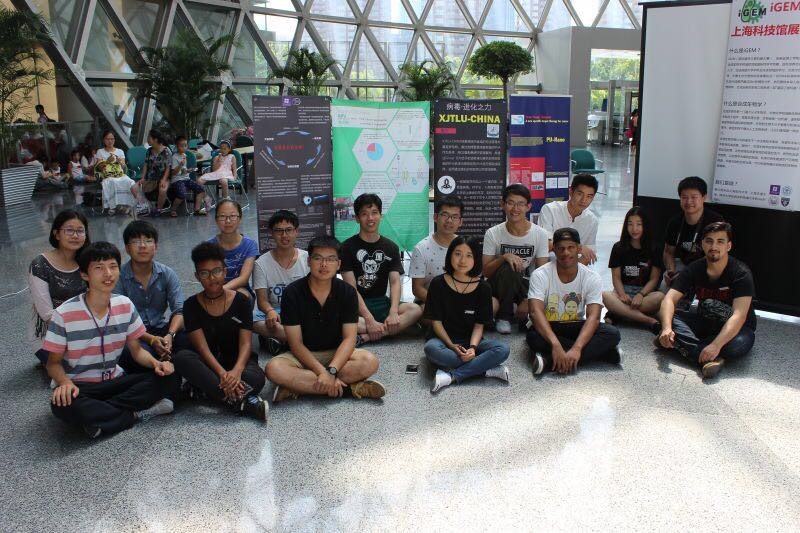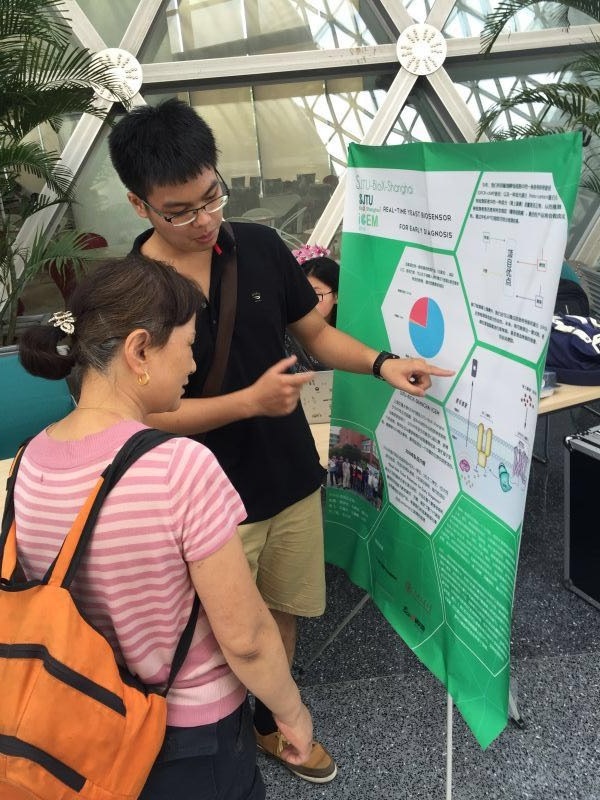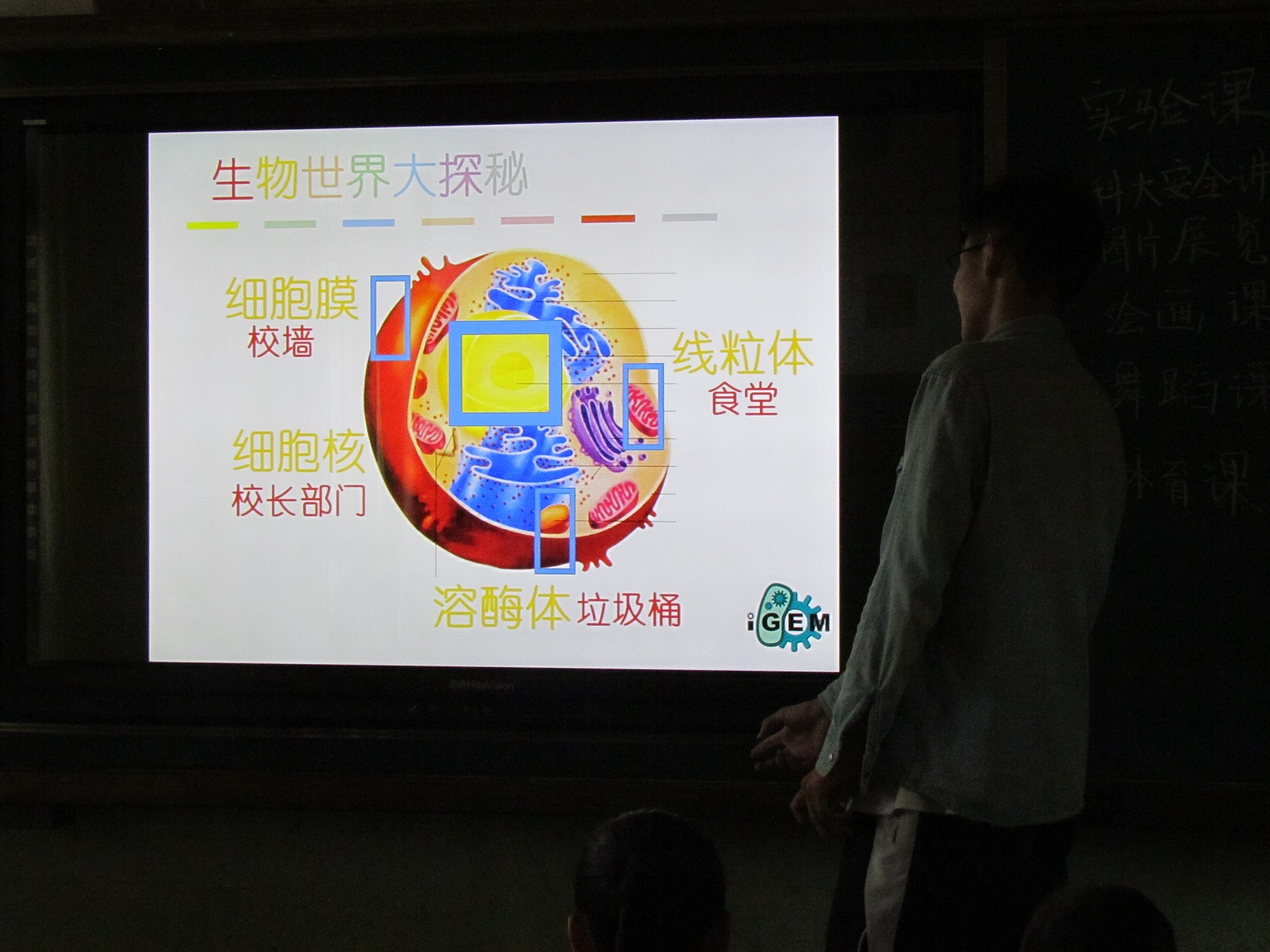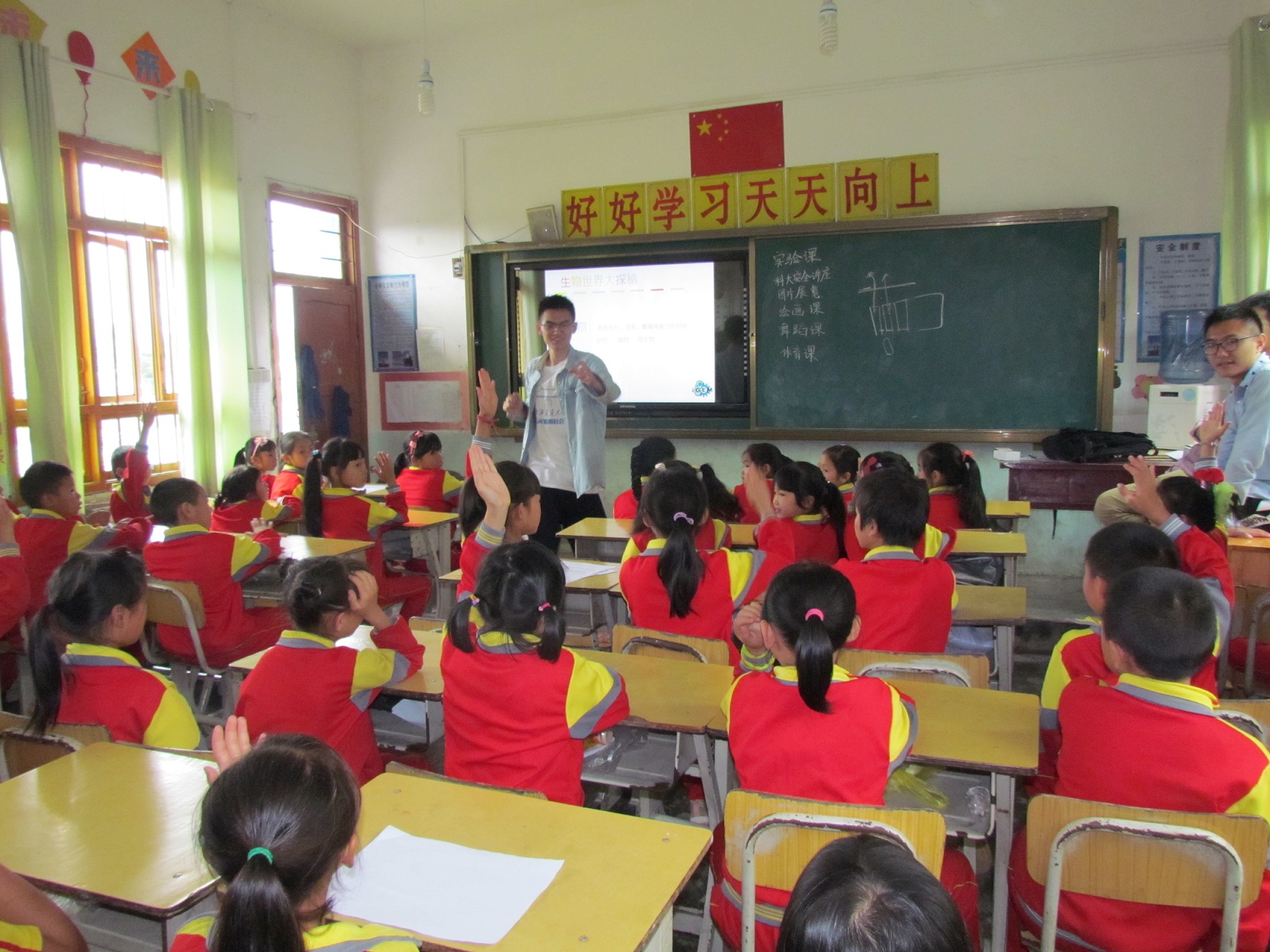Outreach
Exhibition at Shanghai Science and Technology Museum
This summer, invited by the IGEM team of NYUS, our team went to Shanghai Science and Technology Museum, which is one of the most famous science museums in China, to propagandize the IGEM Competition and popularize the idea of synthetic biology together with IGEM teams from TJU and XJTLU.

We participated in this event on August 17th 2015, from 10 am till 5 pm. For preparation, we designed poster elaborately, explaining our project design and team history. To attract audience and popularize synthetic biology, we also brought TED videos and documentaries about IGEM Competition and the idea of synthetic biology.
Many visitors were interested in our poster and videos, and we succeeded in describing our project to the public with little academic vocabularies,so most of the listeners can understand it. Our design was greatly recognized and the public showed enthusiasm about our future product-- we discussed some details about the usage of our product. To our surprise, some high school students,planning to be majored in biology even raised a few questions about our project and asked to take pictures with us.

Being able to communicate with other IGEM teams is also exciting. We introduced our project and team to each others. From their projects, we discovered many novel and interesting ideas, which benefited us a lot. Then, we discussed some problems of synthetic biology, such as bio-sensor, bio-fuel and so on. We had a really good time together and we hope our friendship would go on.
Through this event, we learned how to explain scientific problems to the public, to spread what we have learned in universities. And by doing so, we gained great pleasure. We are looking forward to participating or organizing such activities in the future.
Teaching in Wengan, Guizhou Province
This summer, our team went to Wengan, a poverty-stricken village in the mountain areas in the west of China in Guizhou Province to voluntarily teach local children some biology knowledge of cells and to specifically investigate the medical situation in poverty-stricken areas in China.

During the courses for children, we introduced them the concepts of biology and cells by showing their pictures of our wonderful diverse mother nature. Besides, we tried to understand the structure and the function of cells with analogy and fairy tales. Based on the knowledge of cells, we raised the idea of synthetic biology and shared our thoughts of what kinds of creatures we want to have in the future.
In these courses, we are surprised by children’s active participation and their great curiosity for the fantastic field of biology. After the courses, many kids came to us to share how they think about what we had taught them. “Are cells that small? That’s amazing!”. “Am I truly consisted of cells? Unbelievable!” “There are many cells in the lake? Am I right?” “Can we really create new creatures? That’s so cool!” With these questions and feelings about biology from children surrounding us, we feel greatly contented because to help them know more about our nature, to stimulate their interest in biology is our goal in this teaching program.
In this trip to Guizhou, we also visited the local hospital to investigate its medical condition and interviewed its doctors for further health information of local residents.
The environment of the hospital is well disinfected but not qualified enough to carry out any kind of sterile surgery. The only large medical equipment of the hospital is B supersonic diagnostic set. And the detection device here can simply detect the level of blood lipid and blood sugar. If patients want to do more tests, they need to take a bus for a whole day to the nearest big hospital.

Referred to doctors’ statement, we find that the main diseases local people came here to see are cold, fever and joint rheumatism. The hospital is not capable enough to detect or treat other chronic diseases like hypertension which do bring trouble to many local patients. Patients flow here is rather fixed, about 60 people per day and the costs is not more acceptable to locals, about twenty or thirty yuan per time compared to that of big hospitals in the city. We asked whether these locals can do physical examinations regularly. Doctors said in impotence “I am afraid not. This hospital is far from the quality of executing formal physical examinations. Even though big hospitals nearby do have physical examinations, they are too much expensive for locals.”
After this visit, our resolution of realizing our project is strengthened. We believe our Real-time Yeast Biosensor for Early Diagnosis can be well applied to these village hospitals and can help more people fight against their diseases.




